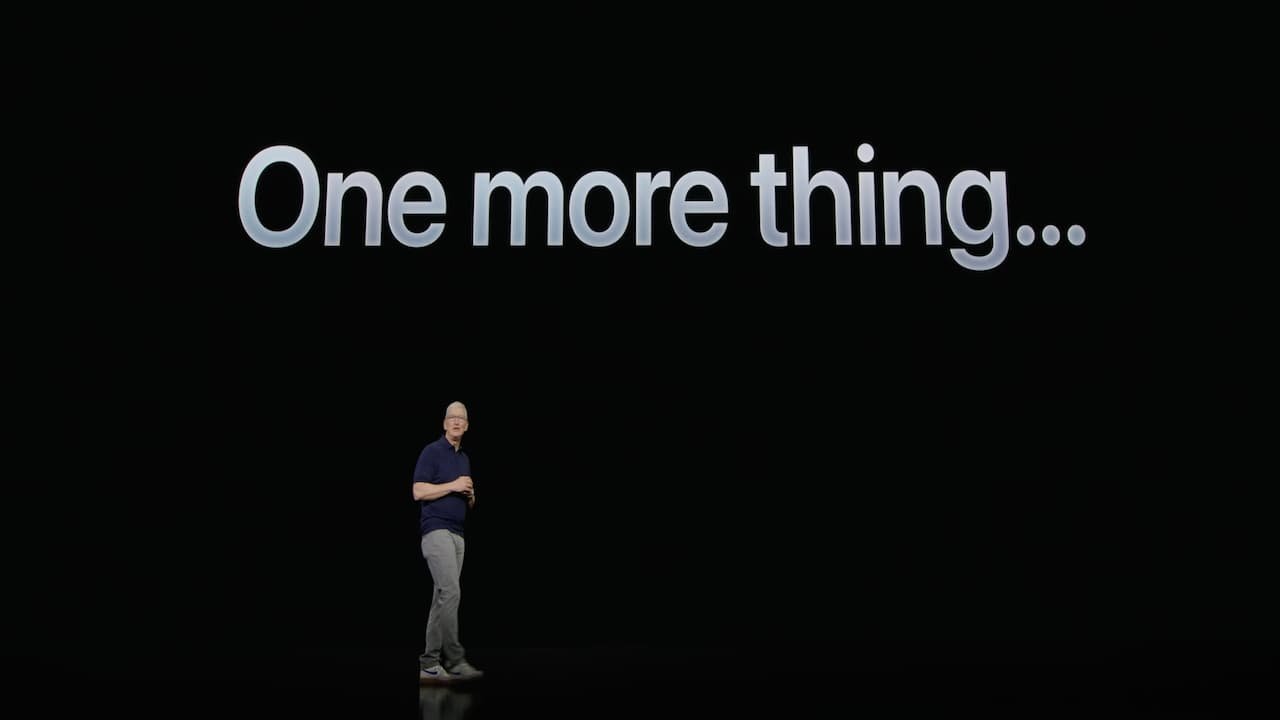This year’s WWDC keynote was another shiny, practiced, and well-oiled presentation for a bunch of new things coming down the pipe. It’s a clear sign that Apple’s is probably done with the way it used to handle announcements — and that’s sad.
The coronavirus pandemic changed a lot of things, but in-person events were always expected to go back to normal. For the most part that has definitely happened, but it sure looks like Apple’s not quite ready to jump back on that particular bandwagon.
This year certainly seems to cement that reality, with the company actually inviting people to Apple Park to watch the same video remote folks would watch of the big unveilings. They could have done it live, had people sitting in seats in front of the executives as they brought out hardware to demo, both the devices and new features.
But we’re probably done with all that now. Apple has chosen to move away from keynotes and events that may invite potential issues, where the hardware and software might not work as intended and therefore raise concerns before anything launches.
Embrace the chaos
One can’t really blame Apple for this. This is a company that, even when things go right on stage for everything else, they can get lambasted for their “courage.”
But there’s entertainment in embracing the chaos, letting there be some room to see how these devices and software work in the real world — even if they’re all still being tested. Apple might be in the entertainment industry these days, but apparently it’s not willing to risk showcasing its features and hardware not working exactly how they should anymore.
It’s not like there are a lot of examples to pull from. It’s certainly not a secret these days that the original iPhone was basically working on a wing and a prayer when Steve Jobs demoed the device for the first time on stage.
Jobs also ran into an issue with Wi-Fi of all things when he unveiled the iPhone 4. One demo unit wasn’t able to load content while connected to Wi-Fi, so he tried to switch to AT&T’s 3G network — which also failed. It was a genuinely funny moment that Jobs made the best of, and even got feedback from the crowd.
Years later, Craig Federighi would step up on stage to showcase Face ID in the iPhone X with a “failed” demo. He tried to unlock the device with just his face, like the feature is supposed to, but ultimately had to resort to using a passcode to get in.
There was laughter and plenty of finger pointing, but, in the end, it all worked out.
Thing is, in both those instances it actually wasn’t the hardware failing. For the iPhone 4 there were just too many devices in the theater connected to Wi-Fi, and therefore the iPhone had trouble loading content.
And, the Face ID fail was actually the device working as it should, as too many people had been using the demo phone and Face ID kept trying to authenticate with Federighi’s face. That led to the device demanding a passcode for security.
More of a refined look
That’s probably the reasons why Apple wants to move away from the live events. Because other issues can crop up, which can weaken the demo of whatever new thing they are showing off.
Imagine Tim Cook on stage, wearing the Vision Pro headset while it’s connected to its portable battery and it just doesn’t work. The battery’s dead because someone forgot to double and triple check. He’s up there with a dead unit, trying to talk about how great it is and how helpful it is.
Instead, Apple practiced and worked it all out in predetermined and controlled conditions. Everything was designed to work exactly the way it should, with pre-recorded demos and everything in between.
This is great for Apple, because it shows the strengths of what’s to come — but it does remove some of the fun, some of the entertainment. Not that anyone wants everything to fail in some way or another, but it is kind of sad to see that live events from Apple might have already gone the way of the dodo.
Plus, it’s especially strange when Apple’s primary competitors, Google and Samsung, are out there doing live events again. Apple is a company that touts its connections to people, but apparently live keynotes don’t fall under that umbrella anymore.
This story originally appeared on Appleinsider


